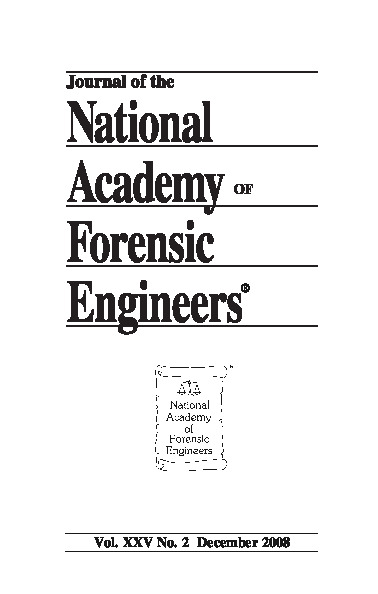Forensic Engineering Analysis Of Excessive Iron Corrosion In A Class Of Automobile Engines
DOI:
https://doi.org/10.51501/jotnafe.v25i2.696Keywords:
Auto engines, corrosionAbstract
Automotive Engine Coolants Are Formulated To Raise The Boiling Point, Suppress The Freezing Point And Protect The Engine Cooling Passages And Other Cooling System Materials From Corrosion. Shortly After Introducing A New Coolant Formulation Across All Models, A Major Auto Manufacturer Began Receiving Reports Of A Rusty Sludge Material Fouling The Cooling Systems In One Truck Model Line Using One Particular Engine. The Same Model With A Different Engine Did Not Experience The Problem, Nor Did Different Models Using The Same Engine. Many Customers Who Owned The Affected Models Experienced Clogged Heaters, Fouled Radiators, Overheating, And In Some Cases, Engine Damage. A Class-Action Lawsuit Was Initiated, Leading To A Forensic Engineering Investigation, With The Objective Of Determining The Actual Root Cause Of Excessive Corrosion. The Class Included Several Hundred Thousand Potential Plaintiffs And Was Represented By Thirty Five Law Firms. This Paper Will Discuss The Analysis And Testing Performed By The Auto Manufacturer, Coolant Supplier And This Investigator. In This Particular Product Defect Case, A Class Action Was Appropriate Because A Large Group Of Plaintiffs Each Suffered A Relatively Small Individual Economic Loss.Downloads
Published
2008-01-01
How to Cite
Leshner, Michael D. 2008. “Forensic Engineering Analysis Of Excessive Iron Corrosion In A Class Of Automobile Engines”. Journal of the National Academy of Forensic Engineers 25 (2). https://doi.org/10.51501/jotnafe.v25i2.696.
Issue
Section
Articles
License
Copyright (c) 2008 National Academy of Forensic Engineers

This work is licensed under a Creative Commons Attribution-NoDerivatives 4.0 International License.
All rights © Journal of the National Academy of Forensic Engineers.
Full statement regarding the author's license of copyright to the NAFE is shown on the Copyright section of the Submissions Page.






